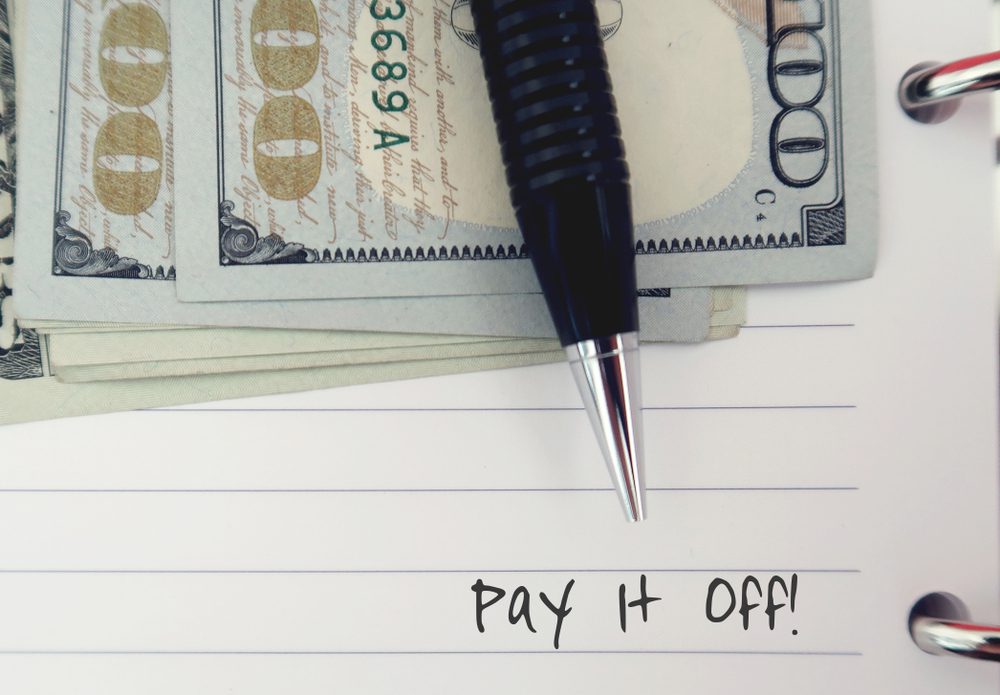Advertiser Disclosure: Many of the companies featured here provide compensation to us. This is how we maintain our free service for consumers. Compensation, along with hours of in-depth editorial research, determines where & how companies appear below.
Debt is something that a lot of people in America struggle with. However, there are ways that you can get out of it and improve your financial situation. One method that you can use is called the “debt snowball strategy.
The debt snowball strategy involves paying off your smallest debt first and then using your payments to pay off the next-smallest debt. This strategy allows you to gradually increase costs as you pay off each debt, creating a “snowball” effect.
What is the debt snowball strategy?
Debt can be a huge burden, both financially and emotionally. But there is a way to get out of debt and stay motivated simultaneously. It’s called debt snowballing.
With this method, you focus on paying off your smallest debt first. Once that’s paid off, you use that money to pay off your next smallest debt, and so on. Every time you pay off a debt, you’re one step closer to debt-free. And with each debt you pay off, you’ll have more motivation to keep going until you’re completely debt-free.

How it works
To get your finances in order, it is essential to list out all of your debts from the smallest balance to the largest. Once you have done this, you can focus on putting as much money as possible toward the debt with the smallest balance. While doing this, makes minimum payments on all your other obligations essential each month.
Paying off your debts can be complex, but some tried, and proper methods can help you get out of debt as quickly as possible. One way is to pay off your smallest debts first and then use the money you would have used for those payments to pay down the next smallest debt.
Example Calculation
Assuming you had an extra $100 per month available for debt payments, consider the following debts:
- A student loan with a $4,000 balance and a $60 minimum payment
- A credit card with a $5,000 balance and a $25 minimum payment
- A car loan with a $20,000 balance and a $350 monthly payment
Paying off your student loan should be your top priority, as it is likely your smallest debt. Allocate an extra $100 monthly towards your loan and the minimum $60 payment. While you’re doing this, make sure to keep up with the minimum payments on your credit card and car loan.
How the debt snowball strategy affects you

Several potential benefits of using a debt snowball strategy to get out of debt include reducing stress and improving your financial situation. However, there are also some drawbacks you should be aware of before you start.
Pro: Quick wins
The debt snowball strategy is a great way to get out of debt. You pay off your smallest debts first, which gives you a psychological boost. This is especially significant for people who carry significant debt or struggle to pay monthly bills.
Pro: Helps build momentum
Debt can be very stressful, especially when you feel like you’re not making progress. One way to ease some of that stress is to focus on paying off one debt at a time instead of trying to keep track of all of them simultaneously. This can help you stay motivated and focused on your goal.
Pro: Improve money-management skills
One of the great benefits of this strategy is that it can improve your financial health. You will be motivated to stick with the plan as you see your debt pile shrinking, and you will also get better at managing your income.
Con: Ignores interest costs
Those against the debt snowball strategy say that it does not consider the number of money people save by paying off accounts with higher interest first. To them, it makes more sense mathematically to pay off accounts with higher interest first so that they do not keep accruing interest.
This is called the debt avalanche strategy.
Con: Wipes out cash reserves
Some worry that using all their money to pay off debt is too risky. They say an emergency could erase our progress in getting rid of debt and create more obligations.
Con: Extended repayment period:
One way to reduce monthly payments is to follow the debt snowball strategy. This involves paying off your debts with the lowest balances first. Another option is the debt avalanche strategy, which first pays off debts with the highest interest rates.
Debt snowball vs. debt avalanche

Two popular strategies for getting out of debt are the debt snowball and debt avalanche. Both have pros and cons, so evaluating your situation is essential before deciding which is best for you.
With the debt snowball strategy, you first focus on paying off your smallest debts. This can help you feel more motivated and accomplished as you see your progress snowballing. However, this method may cost you more in interest over time.
With a debt avalanche, you first focus on paying off your debts with the highest interest rate.
In Summary
Everyone has different financial goals, but one common goal is to get out of debt. The debt snowball strategy is a simple and effective way to pay off the debt that prioritizes ease of use and peace of mind over the depreciation of interest paid. The debt snowball strategy can be a lifeline for those overwhelmed by more elaborate and exacting debt repayment plans. Ultimately, getting out of debt is more important than making sure you pay as little as possible along the way.




